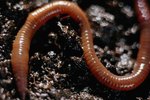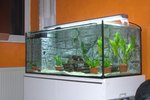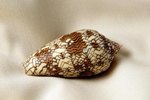
Snails and slugs, both gastropods, share some common physical characteristics, including their slime. These common garden-dwellers both produce a slimy substance that helps them get around and protects them from the environment. The slime they produce and its changing properties enable these creatures to safely traverse widely varied environments, from the leaves of plants and garden rocks to vertical surfaces.
Nature of Slime
Snail and slug slime is mucus secreted from the bottom of a slug or a snail that enables the creature to efficiently move. A slug or a snail leaves a a trail of his slime wherever he goes. The mucus isn't required for all movement, though. These creatures are strong enough to crawl without it, but they produce the slime at all times. The slime enables them to reach areas they otherwise couldn't.
Slimy Climbing
Slugs and snails rely on their slime chiefly for climbing vertical surfaces. While it would initially seem that they should be confined to level surfaces, their slime is powerful and sticky enough to allow them to crawl up inverted, sheer surfaces like walls and windows. The slime's stickiness helps slugs and snails stick to uneven surfaces, like the leaves of plants. This gives them better access to food and shelter, as they can reach otherwise-impossible-to-access areas.
Changing Properties
These slimy gastropods don't choose how to climb with the slime -- it's all in the mucus's innate properties. The mucus excreted by slugs and snails has the consistency of a liquid gel, which is solid at rest and turns to liquid under pressure. As one of these creatures moves along, parts of his underside are at rest while others are pushing down, into the mucus -- compare it to the motion of your foot when you walk. The muscles along his underside relaxing and contracting creates a pulse that pushes him forward. The parts at rest hold him against the surface with the mucus's solid, sticky properties, while the parts pushing off liquify the mucus and eliminates its hold, allowing him to move forward.
Skin Protection
Slime isn't just for getting around -- it has protective properties that benefit slugs and snails. For example, slugs excrete extra slime to form a protective cocoon during inclement weather; they may use their slime as a makeshift bungee cord for lowering themselves from high areas. In both slugs and snails, slime is used as a natural protection from the sun's rays, bacteria and cuts. Its protective and regenerative properties have even led to its use as an ingredient in skin care treatments for humans.
References
Photo Credits
-
Photos.com/Photos.com/Getty Images
Writer Bio
Tom Ryan is a freelance writer, editor and English tutor. He graduated from the University of Pittsburgh with a degree in English writing, and has also worked as an arts and entertainment reporter with "The Pitt News" and a public relations and advertising copywriter with the Carnegie Library of Pittsburgh.



